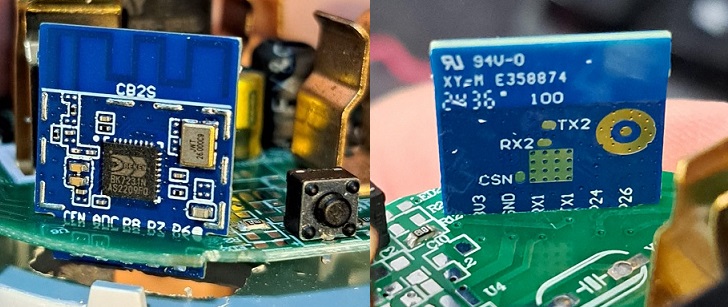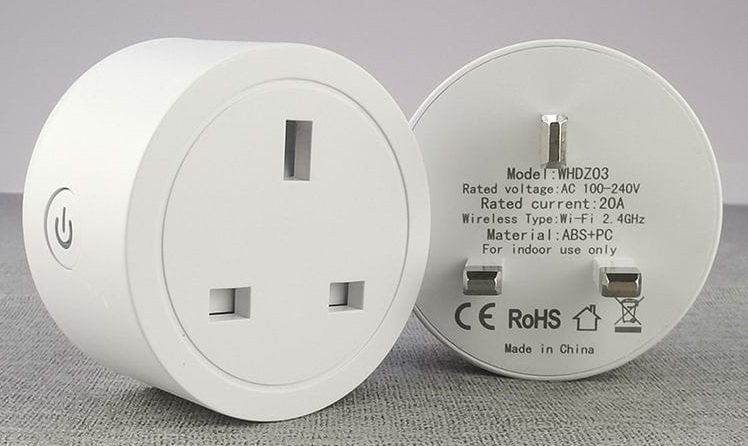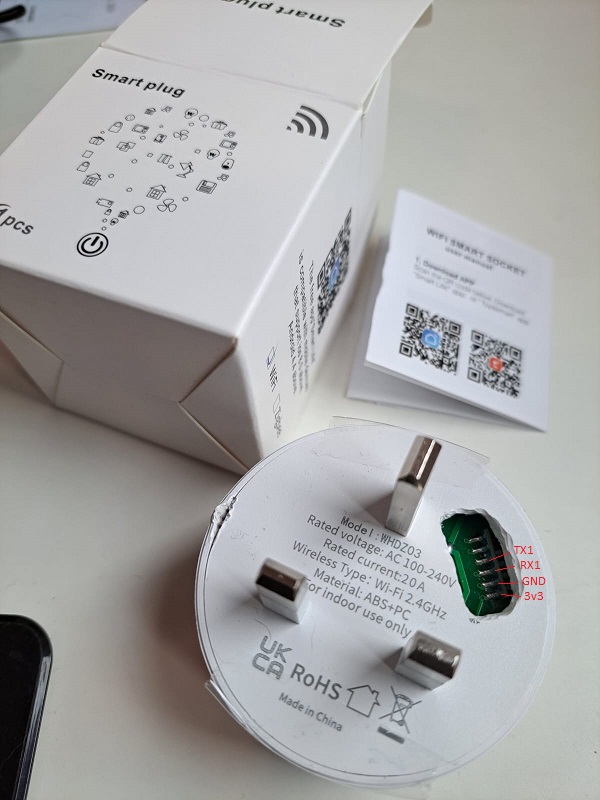Tuya Smart Plug 20A WHDZ03
General Notes
These plugs with/without energy monitoring are sold under many brands on Aliexpress / taobao / pinduoduo, and are available in both 16A or 20A.
The 20A smart plug with energy monitor is not flashable using tuya-cloudcutter. The main module version on smart life app is V1.1.23, which is on the known patched firmware list.
The socket is not glued but factory pressed. I do not recommend using a screwdriver to pry it open, I did and I left some damage on the side (see picture). It may be better to try opening by pushing a tool through the earth pin to apply force, holding the outer shell. After opening we can see that it is using a CB2S wifi module with the BK7231N chip.

It is not possible to separate the PCB from the case without unsoldering the main socket pins. Therefore I chose to use a rotary tool to make a hole in the external casing. This provides us with access the 3v3 GND RX1 TX1 pins without soldering. I compiled the below configuration on esphome, saved the uf2 binary, and flashed it using ltchiptool with default settings, holding everything in place by hand while flashing the firmware. Press the physical button on the PCB for around 5-10 seconds to flash.
Product Images


GPIO Pinout
| Pin | Function |
|---|---|
| P6 | CF1 pin |
| P7 | CF pin |
| P8 | Blue LED |
| P11 | Switch button |
| P24 | SEL pin |
| P26 | Relay |
Basic configuration
# Basic Config
substitutions:
friendly_name: Socket 20A
device_name: socket-20a
esphome:
name: ${device_name}
friendly_name: ${friendly_name}
bk72xx:
board: cb2s
# Enable logging
logger:
# Enable Home Assistant API
api:
encryption:
key: !secret api_encryption_key
ota:
- platform: esphome
password: !secret ota_password
wifi:
ssid: !secret wifi_ssid
password: !secret wifi_password
# Enable fallback hotspot (captive portal) in case wifi connection fails
ap:
ssid: ${friendly_name} Fallback Hotspot
password: ""
captive_portal:
#optional
web_server:
port: 80
text_sensor:
- platform: libretiny
version:
name: LibreTiny Version
output:
- platform: gpio
id: button_led
pin: P8
inverted: true
binary_sensor:
- platform: gpio
id: binary_switch
pin:
number: P11
inverted: true
mode: INPUT_PULLUP
on_press:
then:
- switch.toggle: relay
switch:
- platform: gpio
name: ${friendly_name} Relay Switch
id: relay
restore_mode: "RESTORE_DEFAULT_OFF"
pin: P26
on_turn_on:
then:
- output.turn_on: button_led
on_turn_off:
then:
- output.turn_off: button_led
sensor:
- platform: hlw8012
model: BL0937
cf_pin:
number: P7
inverted: true
cf1_pin:
number: P6
inverted: true
sel_pin:
number: P24
inverted: true
current:
name: ${friendly_name} Current
filters:
- multiply: 0.5
voltage:
name: ${friendly_name} Voltage
power:
name: ${friendly_name} Power
energy:
name: ${friendly_name} Energy
voltage_divider: 800
current_resistor: 0.001 ohm
update_interval: 1s
change_mode_every: 1